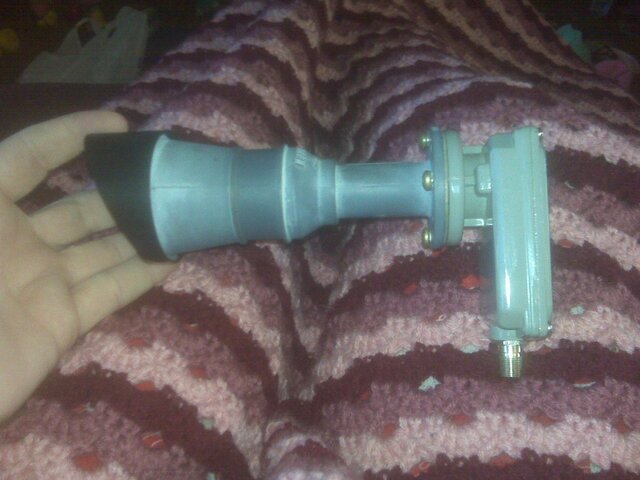However it is a FSS but has the same specs as the eagle aspen 270. So I am thinking it will work just fine. However if someone could explain the above post by Tron I would be on my way. Well after I get it mounted that is

FSS just means Fixed Service Satellite, so basically a FSS LNB is a linear LNB as opposed to the circular LNBs (called DBS, or Direct Broadcast Satellite, LNBs) used on the pay satellite services. All linear LNBs are FSS LNBs.
Stacked LNBs, such as the FSS and DBS LNBs on a Superdish, send both vertical and horizontal polarities down at the same time. So, all transponders and channels on a particular satellite will be available simultaneously on the same cable. The stacked LNBs do this by sending the horizontally polarized transponders down the cable at a higher frequency range above the vertical ones ("stacking" them above the vertical transponders). Regular non-stacked LNBs switch between vertical and horizontal, depending on the polarity of the transponder carrying the channel you're watching. Therefore, on a non-stacked LNB, your LNB will only be sending down one polarity at a time (either vertical or horizontal).
Here is where the advantage of stacked LNBs comes in... If you have multiple receivers with a stacked LNB, you can use a high frequency (2.3 ghz) splitter to send both polarities simultaneously to as many receivers as you need. If you do not have a stacked LNB, you can't use a splitter because the receivers would be fighting over which polarity to set the LNB to. In this case, you would need a dual output LNB (which the Eagle Aspen P270 is) for up to two receivers and an added multiswitch for more than two. With a dual output LNB, the polarity on each output can be independently set by the connected receivers or a multiswitch.
According to some information from Eagle Aspen, the P170+ is a single polarity LNB, so it would be of no use to you if you want both horizontal and vertical polarities. However, I have read elsewhere that the P170+ is a dual polarity LNB, so that is something you would have to check for yourself. In either case, it is a single output LNB.
Getting back to stacked LNBs, the disadvantage of stacked LNBs is that your horizontal transponders won't be where they are supposed to be. Instead, they'll be at a higher frequency. For example, if you are looking for a horizontal transponder that is listed as 11730, you will find it at 24600 minus 11730, or 12870. If you have a blind scan receiver, you don't have to worry about the math, since the receiver will find the transponders with a blind search. Another thing to consider with stacked LNBs is that your cable and all splitters, switches, or any other devices must be able to pass at least 2.3 ghz to accommodate the higher frequency range. Most newer cables and accessories are able to pass that frequency range, but some of the older switches and amps were only able to pass up to 1.4 ghz.
The bottom line is that if you want to connect more than one receiver to your LNB, you will need either a stacked LNB or a non-stacked dual output LNB.


